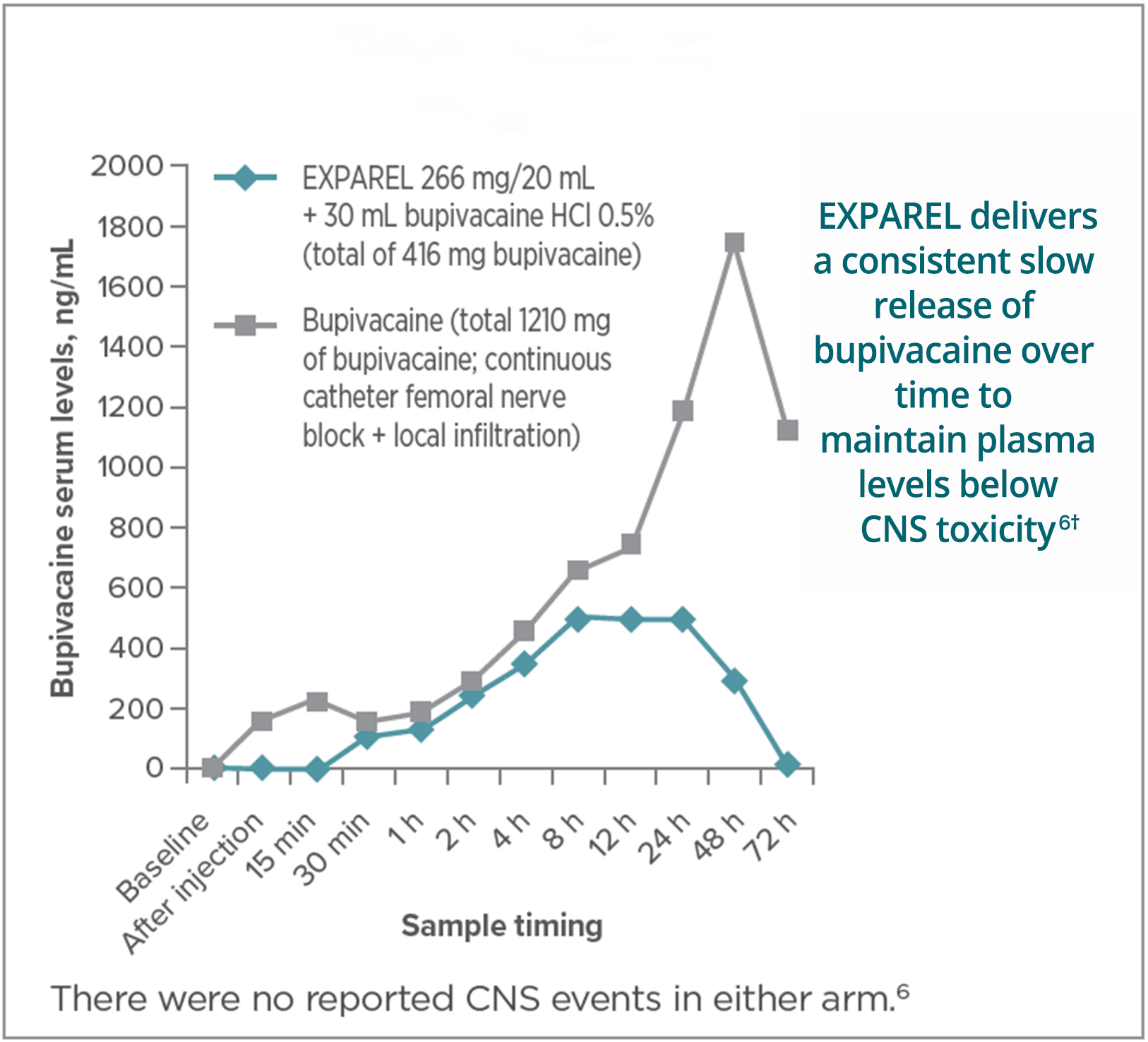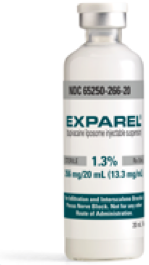Avoid the burden of pumps and catheters with EXPAREL
Only EXPAREL provides long-lasting pain control in a single dose.
EXPAREL avoids the common problems associated with pumps and catheters1-4:
- Migration1
- Unpredictability/malfunction2-4
- Patient compliance2
- Leakage2,3
- Infection4
Why risk toxicity with pumps and catheters?5

*Minimum local anesthetic threshold for CNS toxicity is 2000 ng/ml.7
†Data from a single-center cumulative dose toxicity study characterizing serum bupivacaine concentrations over 72 hours in patients undergoing a total knee arthroplasty. Patients in the EXPAREL arm received EXPAREL 266 mg (20 mL) plus 30 mL of bupivacaine 0.5% as a periarticular injection (PAI). Patients in the continuous femoral nerve block arm received a bolus of 20 mL of bupivacaine 0.5% followed by 8 mL/h bupivacaine 0.5% for 48 hours and a PAI of 30 mL of bupivacaine 0.5% during surgery.6
CNS, central nervous system.
Compare the cost
EXPAREL
133 mg (10 mL)=$227.63
266 mg (20 mL)=$376.12
Continuous catheter
Average of $433.82 per patient
for device alone8
In the face of shortages,
EXPAREL requires significantly fewer local anesthetic resources than continuous catheters

One EXPAREL 266 mg (20 ml) single-use vial may require only one vial of bupivacaine‡
-OR-
Less than one vial of bupivacaine‡ when one EXPAREL 133 mg (10 ml) single-use vial is used in an interscalene brachial plexus nerve


Continuous catheters require up to 10 to 15 vials of bupivacaine‡§
EXPAREL delivers long-lasting pain control in a patient-friendly modality
- No external devices attached to patients at discharge
- No extra burden for patient to remove the catheter
- No need for patient involvement once home
- No unplanned phone calls related to patient compliance

